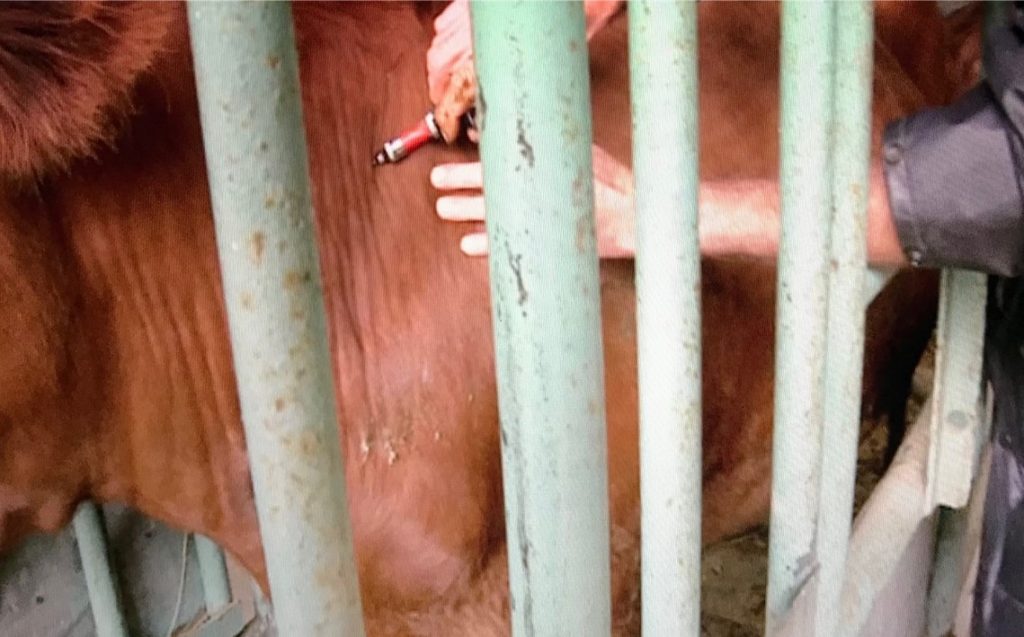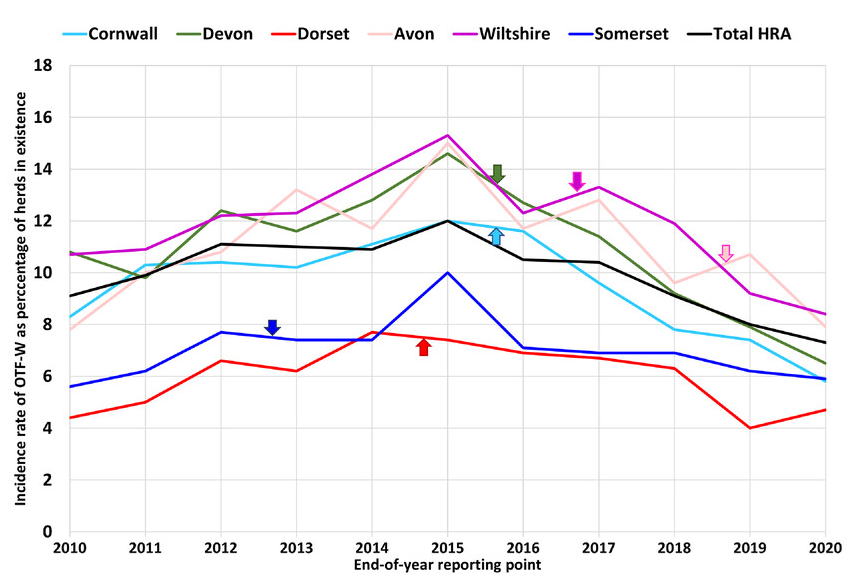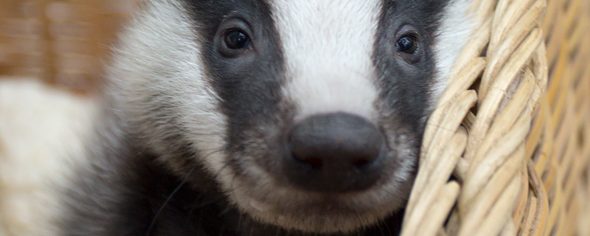Cattle testing, and not badger culling, is helping control bovine TB in England

Published, peer-reviewed science on the efficacy of badger culling has failed to find an association between intensive badger culling and either the incidence or prevalence of bovine TB in cattle herds (here). In plain English, data on levels of bTB show that badger culling has had no effect on the level of disease in cattle. This is the only published peer-reviewed science on post-2017 data from the ton of bTB statisitics produced by farmers and vets across England over many years. Ask yourself why that is, and also why the government claims it has worked but refuse to discuss it.
The pro-cull response to anyone publicly questioning badger culling efficacy has been (not surprisingly) to follow government rhetoric, and claim that it has caused a 56% reduction of bTB in cattle to-date. Such comments are repeated by those associated with the secretive bTB Partnership of farmers and cattle vets: ‘just look at this graph showing bTB falling over the period of the culls’. The phoney mantra that accompanies various homemade graphs is often an emphatic and self-confident ’look how well badger culling is working’, or ‘you can’t possibly argue with this huge decline in disease’, and ‘bTB is lower than it’s been for years’.
These summaries of the last 11 years of bTB control are simply unsubstantiated however. They repeatedly overlook the scientific necessity to show the relationship between cause and effect. Something that the Zuckerman, Dunnet and Krebs reviews also failed to establish using basic science principles. Put simply, cause and effect is the relationship between two things, when one thing makes something else happen. Ie. Can it really be claimed that it is badger culling that has brought about the decline in disease?
For the answer to that to be yes, it would be necessary to show that levels of disease were affected only by badger culling and nothing else. Levels of disease are clearly affected by a number of variables other than badger culling. As bTB is primarily a cattle disease, with most (if not all) infection arising from other cattle, the type & frequency of cattle testing will have a huge effect on detectable disease.
So has cattle testing on farms within the badger cull zones changed? Yes it has. Testing has tightened hugely, albeit painfully slowly, as can be seen in the graphic below. It has increased in frequency, and additional testing methods have been introduced too.

In reality, data point to increased and improved cattle testing being the cause of gradual bTB decline in cattle. The graph below illustrates that the decline in bTB across the south west counties of the High Risk Area (HRA) began on average around 2015, 5 years after annual cattle testing began, but before the roll-out of badger culling (coloured arrows indicate point at which badger culling began). It was earlier in other HRA counties. Cattle testing was having an effect well before badger culling could have.

Here (below) is a fresh set of HRA data from abattoir surveillance, detecting disease from previously undetected but infected herds. It also records the response to annual tuberculin testing peaking around 2012.

Published government data for Bovine TB cattle herd breakdown (OTF-W) incidence for the years 2021 and 2022 can now be added to the county-based reference series published in 2022 (1). This shows continued synchronised decline across the High Risk Area counties at similar constant rates, following establishment of annual SICCT testing from 2010 (Figures 1 and 2).


Similar, but slower decline in BTB epidemic in the Republic of Ireland since 1999 (2), has reduced incidence there to 4.4%, but it has been effectively static or rising since 2018 (3). In England, more frequent SICCT testing, with some use of interferon gamma IFN-y and additional tests, have similarly reduced cattle-to-cattle transmission. If levelling off in England is now anticipated, increased and routine use of the more sensitive live bacteria (bacteriophage) blood tests, (as validated for human health checks), for pre-movement cattle testing is needed. There could be need for recourse to cattle vaccination, with bacteriophage, a reliable blood test option for divergence (DIVA infected vs vaccinated) testing too.
Comparison of cattle TB in areas that have undergone culling with those that have not, further suggests cattle measures are by far the most likely cause of disease decline since 2010. In the 2022 paper (1), multiple statistical models checked the data on herd breakdowns over time and failed to find any association between badger culling and either the incidence or prevalence of bovine TB in cattle herds. The models that most accurately fitted the data were those that did not include badger culling as a parameter, suggesting that factors other than culling (cattle testing) were more likely to be the cause of the reduction in disease in cattle.
So it really is not scientifically credible for anyone to claim that the reduction in bovine TB is the result of badger culling. Or to keep up with the tired and fake claims of a need to use ‘all the tools in the box’. The evidence strongly suggests otherwise. The introduction of numerous cattle measures and increased sensitivity of testing has brought about disease benefit as it has done in previous epidemics.
The problem that remains is that notwithstanding the slaughterhouse pattern (above), while OTF-W* incidence is falling, OTF-S* is not. Beyond a few false positives, this suggests that the rate of detection of early infections may not be as fast as that of later infections. If badger culling was working, OTF-W* and OTF-S* should both be falling as new infections are prevented. It is not. As in Republic of Ireland, where badgers have been mass killed for decades, undetected infection is embedded in the herds and being spread by cattle movements within wrongly labelled ‘clear’ herds. As it was from the pockets of bTB remaining in the 1960s and 1970s in England. This is the challenge, and this is what needs addressing. False claims from those who wish to keep blaming badgers are unhelpful and are not ‘following the science’, just trying to manipulate it. Opposing badger culling is not a ‘political position’ as the NFU claim, it is simply following good science.
*Note:
OTF-W = Officially TB-free status Withdrawn
OTF-S = Officially TB-free status Suspended
References
1 Langton TES, Jones MW, McGill I. Analysis of the impact of badger culling on bovine tuberculosis in cattle in the high-risk area of England, 2009–2020. Vet Rec 2022; doi:10.1002/vetr.1384
2 More SJ, Houtsma E, Doyle L, McGrath G, Clegg TA, de la Rua-Domenech R, Duignan A, Blissitt MJ, Dunlop M, Schroeder PG, Pike R, Upton P. Further description of bovine tuberculosis trends in the United Kingdom and the Republic of Ireland, 2003-2015. Vet Rec. 2018 Dec 15;183(23):717. doi: 10.1136/vr.104718. Epub 2018 Nov 28. PMID: 30487295; PMCID: PMC6312888.
3 Gov.ie 2023. National Bovine TB Statistics, Department of Agriculture, Food and the Marine.
Discover more from The Badger Crowd - standing up for badgers
Subscribe to get the latest posts sent to your email.

